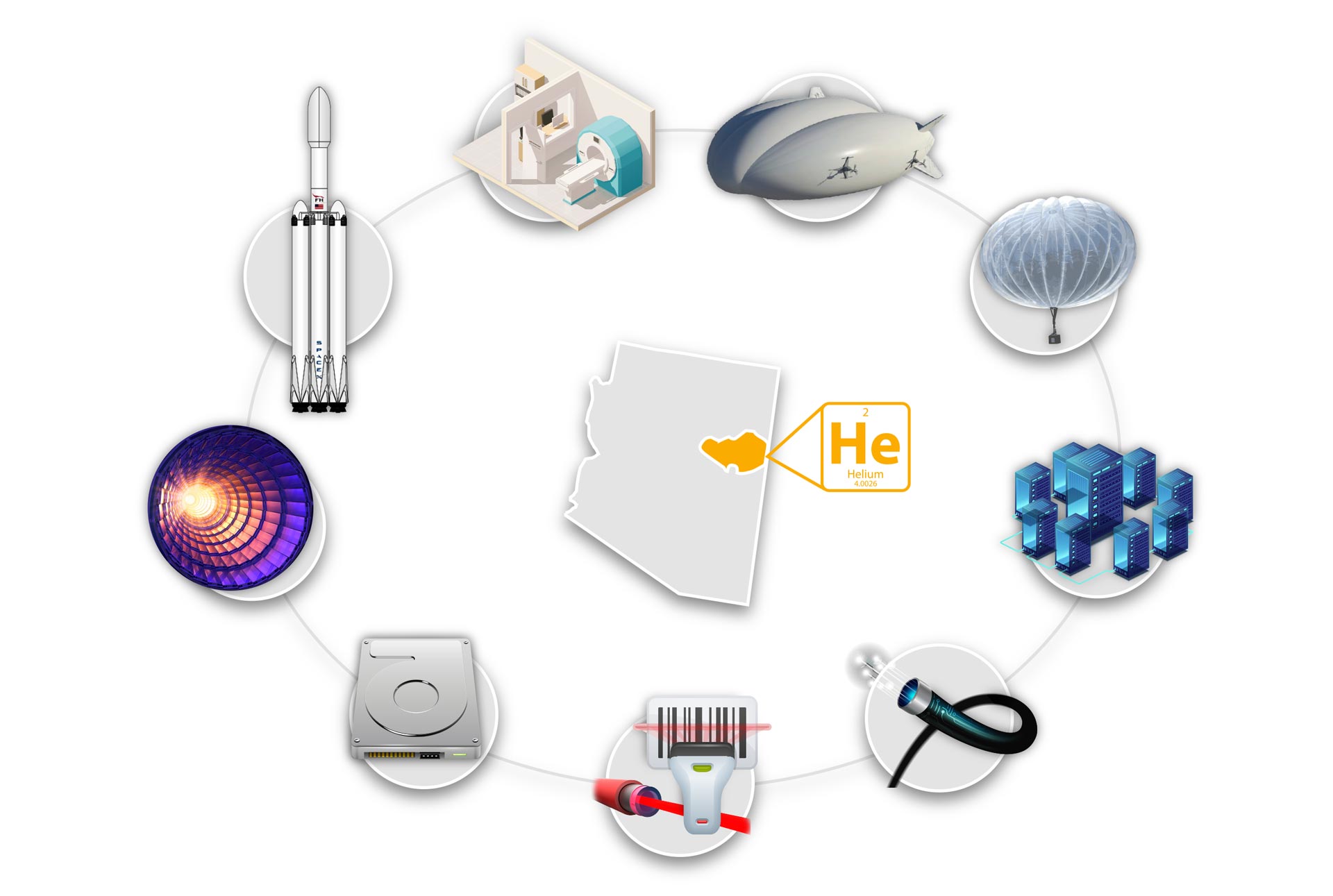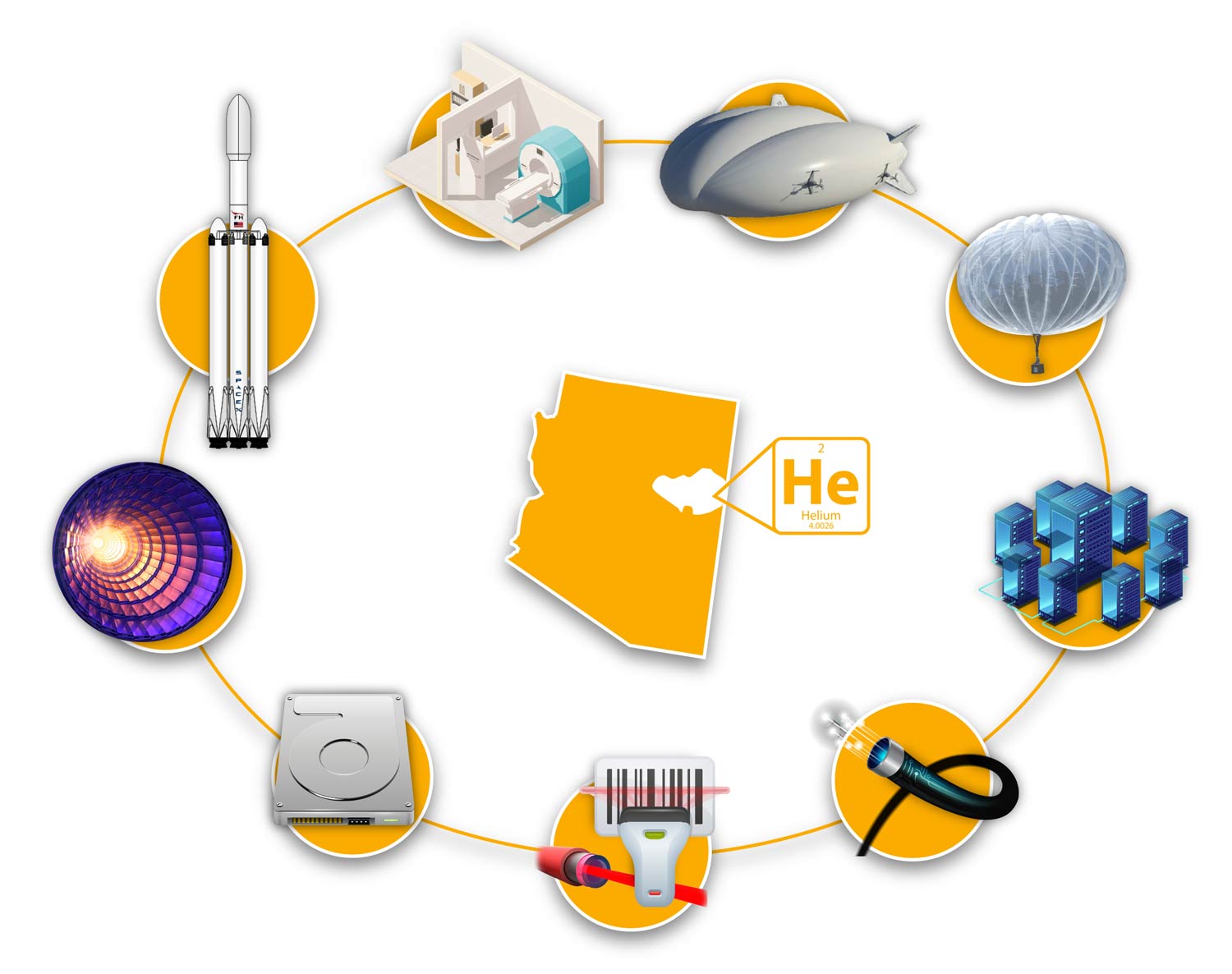Helium has no substitute in most high-tech coolant applications. From cutting edge computers & Google tech to SpaceX & particle accelerators.
cubic feet of helium estimated to have been consumed in the U.S. in 2017

Heliopolis Project in Arizona’s Holbrook Basin
Liquid helium is used as a coolant for superconductor magnets in particle accelerators
Liquid helium is used to purge gas in rocket engine systems
Liquid Helium used as a coolant for superconductor magnets in MRI machines
Lockheed Martin is building 12 hybrid helium airships for Straightline Aviation (SLA) $480 Million, by 2021.
Google’s Project Loon aims to bring internet to the world through a network of Helium filled balloons traveling on the edge of space.
Helium-filled high-capacity hard drives are now used to power industry’s largest data centers, including Netflix video streaming.
Helium is required for manufacturing fiber optics
Helium neon laser barcode readers
Helium-gilled high capacity hard drives increase capacity by 50% and energy efficiency by 23%

Hard Drives
Replacing the air in a hard drive with helium (seven times less dense than air) the disks inside create less turbulence as they spin, meaning more discs can be packed into less space and use less power.
Data Centers
Helium-filled high-capacity hard drives are now used to power industry’s largest data centers, including Netflix video streaming.
MRI Machines
Liquid helium is necessary to keep the superconducting magnets cool in an MRI machine. This is due to a superconducting magnet’s interesting quantum properties – kept near absolute zero temperature, it will never lose any of its magnetic potential.
Space Exploration
Helium is also critical to the space industry, used in SpaceX fuel tanks to launch re-usable rockets for satellites and space exploration
Particle Accelerators
The same concept is utilized in the Large Hadron Super Collider to accelerate particles to near the speed of light.
Satellites
Helium is critical to keeping satellite instruments cool.
Deep Sea Diving
Helium is also used as a gas to breathe in deep-sea diving.








